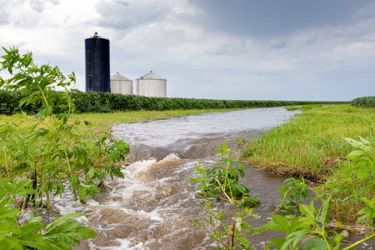Despite Regulatory Push, U.S. EPA Finds Nutrient Pollution Isn't Improving


Despite notable efforts from industrial wastewater operations and treatment utilities alike, the U.S. EPA has seen virtually no progress on one of the country’s most pressing contamination problems.
“The nation’s rivers and streams remain stubbornly polluted with nutrients that contaminate drinking water and fuel a gigantic dead zone for aquatic life in the Gulf of Mexico,” the Associated Press reported. “It’s a problem only expected to get harder to control as climate change produces more intense storms that dump rain on the Midwest and South. Those heavy rains flood farm fields, pick up fertilizers and carry them into nearby rivers.”
The troubling results were uncovered by an EPA assessment of samples collected in 2018 and 2019, comparing river conditions from previous samplings. Phosphorus levels dipped, but nitrogen levels were found to be almost completely unchanged.
As nutrient-driven problems like harmful algal blooms grow worse, regulators are cracking down on sources of nitrogen and phosphorus, like meat processing operations. But as those efforts have yet to make a dent in the problem, calls for additional measures are emerging.
“Anne Schechinger, Midwest director with the Environmental Working Group, said new regulations are needed, not voluntary efforts,” according to the Associated Press. “She said the Biden administration has done a lot to improve drinking water, but not enough to reduce agricultural runoff.”
Stricter regulation alone might not be enough to address the problem. For the Chesapeake Bay, one of the country’s most iconic water bodies as well as one of its most nutrient polluted, significant funding will have to be central to the solution as well.
“In the last decade alone, state and federal agencies have spent more than $2 billion on programs to help farmers in the Chesapeake region install conservation practices,” per Bay Journal. “And spending is dramatically increasing as the 2025 deadline for the Bay’s cleanup goals approaches.”
With nitrogen and phosphorus levels proving to be more stubborn than officials hoped, additional regulation, funding, and technological innovation are likely on the horizon for wastewater treatment operations.
To read more about how farms, industrial operations, and wastewater systems address nutrients in their effluent visit Water Online’s Nutrient Removal Solutions Center.
